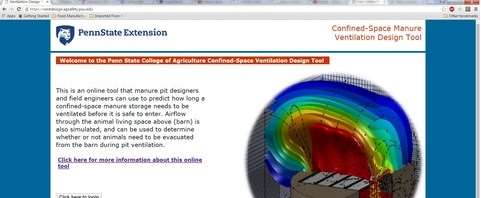Online tool can help create safer environments
By Diego Flammini
Assistant Editor, North American Content
Farms.com
Farmers planning on having manure storage pits constructed may benefit from pointing builders and engineers to a new online tool that can help create safer environments.
The Confined-Space Manure Ventilation Design Tool was created by researchers at Penn State’s College of Agricultural Sciences and is designed to help engineers, farmers and safety authorities determine how long a confined manure storage space needs to be ventilated for to remove toxic and asphyxiating gases.
Many storage pits contain hydrogen sulfide, carbon dioxide, methane and ammonia, and some statistics show as many as 10 people die annually in North American animal-manure pits.

After users enter barn design, dimensions, manure storage size and ventilation configuration into the online tool, it generates customized information about the concentrations of any toxic gases.
The online tool is the end result of decade-long research by members of different organizations including Penn State’s Department of Agricultural and Biological Engineering; they say the tool is made for users of all levels.
"You don't have to be a computational fluid design or computer assisted design expert to use the online design tool. Results include contaminant gas decay curves, real-time animations of gas decay and ventilation time required to reduce contaminate gas and replenish oxygen to acceptable levels for human entry," said Dan Hofstetter, a research assistant in agricultural and biological engineering who helped develop parts of the online tool.